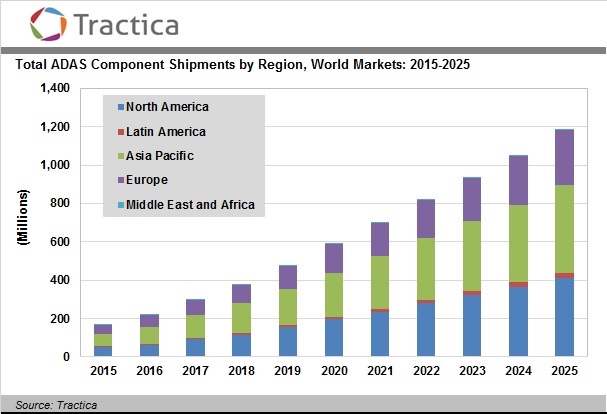The market for advanced driver assistance systems (ADAS) is on the verge of a tipping point. Driven largely by a quest for improved safety, either via government mandates or a desire to receive top-tier crashworthiness ratings, automakers are rapidly incorporating new technologies and systems that are designed to help drivers avoid accidents by improving their situational awareness, improving reaction times, or enhancing the vehicle’s response to adverse conditions. Key components that are enabling ADAS include cameras, image processors, system processors, ultrasonic sensors, solid-state lidar, high-end lidar, radar sensors, and infrared sensors, among others.
According to a new report from Tractica, ADAS component shipments will increase at a healthy pace over the next decade, rising from 218.1 million units shipped in 2016 to 1.2 billion units by 2025. By that time,Tractica forecasts that the ADAS component market will reach $89.3 billion in annual revenue.

“Advances in a number of fields, including camera and imaging technology, high, power, low energy consumption processing, advanced neural networks and data processing, and others, have shifted the focal point of technology innovation from the computer in the 1990s, to the mobile handset in the 2000s, and in the current decade, to the automobile,” says principal analyst Keith Kirkpatrick.
Kirkpatrick adds that, while fully connected and autonomous vehicles are likely a decade away from hitting the roads en masse, the stepping-stone technologies that will be refined and improved upon for the driverless cars of the future are rapidly being integrated into the vehicles of today.




